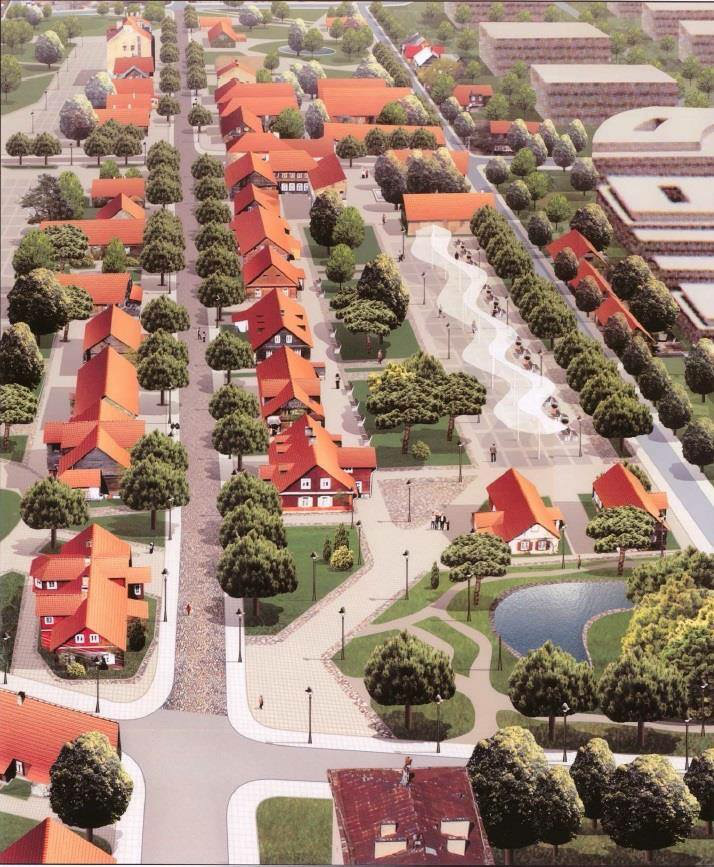See Reflection \\ Week 8 Review for previous review
Subverting Conservation Through SubtractionThere are currently plans to demolish most of the wooden architecture in Snipiskes whilst preserving the central world heritage protected area in the centre. In my project, “Subverting Conservation Through Subtraction”, I want to subvert these current proposals and challenge the concept of preserving heritage. Heritage can be traditions, languages or buildings that belong to a culture, created in the past, with historical importance – these are ever changing, so how do you decide when to freeze it? Are non-original additions to buildings irrelevant? It could be argued that they reflect the taste and priorities of a given historical period.
When visiting Snipiskes, it was apparent that the gardens were very important to the community living there, and played a huge part in their life style. A lot of pride was taken in the planting of colourful flowers, and most of the houses had allotments growing veg and berries – some of which it seemed were being sold at the local market. The proposals for the world heritage area that is being “conserved” show these gardens removed and replaced with public, pedestrianised hardscaping.

The original inhabitants of these houses were displaced during the war. Because the community that live there now didn’t build the houses, most of the people are actually indifferent to the heritage of the architecture. I believe the gardens speak more of the culture of this community than the timber houses, and yet the Municipality and World Heritage have decided differently.
The border of the world heritage site doesn’t make any sense. The houses within the area being protected seem no different or any more special to the ones in the areas being demolished.

Within the last two decades, Snipiskes has been being developed as Vilnius’ new city centre. The region to the South of the wooden houses has seen the erection of several new glass skyscrapers, and as the municipality plan to expand this business region, the value of land to the North has soared.

One issue for developers looking to buy these plots is that most of the houses are owned by common joint ownership, which means that the multiple owners must all agree to sell at the same time. Several years ago there was an outbreak of fires in the wooden region. Some say these were started deliberately by buyers wanting to displace the residents holding ransom plots, but the rumours were never confirmed. It might also be suggested that the lack of infrastructure development in this area has been a deliberate tactic by the municipality to keep value and desirability of the houses down, thus making it easier to buy them in the future.
Rather than “freezing” the heritage area, which could prevent any future heritage from being creating, I will be exploring subtraction as a way to preserve heritage. I will be exploring subtraction as a transformative or creative process.
In today’s society there is a tendency to throw things away when they’re broken, rather than repair them. Increasingly items are designed to become obsolete – take our phones, for example.
In Japan, it is accepted that many modern structures will be replaced after just a few decades. So much so, Architect Kisho Kurukawa proposed a tower block with dynamite in its structure to be wired up and automatically destructed in 30 years.
Other methods of demolition to implosion can include the bottom-up cut and take down method, and more recently the top-down shrinking method (which actually produces energy in the process). These methods are cleaner and make waste easier to recycle and re-use, however they are more expensive.
When I disassembled an object myself (see Output \\ Disassembly of an Alarm Clock), I learned that the process can reveal the scale of the assembly. I uncovered components I had never seen before. I discovered some components are designed to be permanent and others to be taken apart. The process of destruction was transformative – I created an assembly of parts from a 3D object. But most importantly, it gave me an appreciation for the design and production of the object I had previously taken for granted.
I propose that the community could dis-assemble some of the timber architecture, recording the information as they go, as a method to preserve its heritage. Through the process they would gain an appreciation for the houses, learn about how they were assembled, and they could also create a material stream for something new – which could be designed for its future inevitable dis-assembly.
As my project develops, I would like to explore the following three translations of subtraction:

- Different approach to listed buildings – UK’s policy is unuseful
- New architecture as a result of subtraction
- Dis-assembly / re-assembly – how do you record these processes?
- Rituals involved in subtraction and re-assembly
- Process of craft of the artefact – very Japanese concept
- Moving house as case study
- Different meanings of subtraction, demolition and disassembly
- Does outsider perspective have an impact
- Subversion of “heritage” and “conservation”
Julian:
- Really important project developing a novel approach to listed building – need to test it / develop it through a catalogue of possible interventions and peoples’ desires and …
Rob:
- Look at Japanese conservation, open air museums, temples being rebuilt after 20 years
Cristina:
- Strong start – great basis to ‘have fun’ developing further
- Would be good to contextualise it within building conservation discourse – maybe writing a paper?
Advertisements Share this:





